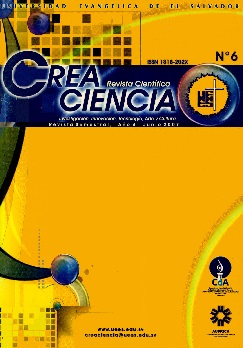Practical model for the detection and management of labor progress abnormalities
DOI:
https://doi.org/10.5377/creaciencia.v0i6.8600Keywords:
Abnormal birth, Extension of labor, Abnormality arrest, Systematic evaluation of laborAbstract
The main objective is to present a practical theoretical model in the management of labor progress abnormalities. The concepts of normal and abnormal labor to be used are described; The graphic instrument to be applied with their respective alert curves, the systematic evaluation of the anomaly and the clinical behavior to be followed: It is a retrospective descriptive study of 250 parturients in which the work model has been used in the management of abnormal evolution of childbirth Among its objectives are the knowledge of the evolution of the birth, whether normal or abnormal, the frequency and type of anomalies in the progress of the delivery, the route of the delivery, the clinical behavior and the perinatal result obtained with the application of the model of proposed work. The clinical profile of parturients is similar to the population that attends the Maternity Hospital Zacamil National Hospital. It was detected that anomalies in the progress of labor occur with a frequency of 28%; prolongation and arrest of the active phase in the same proportion approximately (45% urs 46%). In all cases, a systematic evaluation of childbirth is performed with an oxytocin use result in .56% of cases due to inadequate uterine contractility. The 5% caesarean section rate for the sample in general and in pregnant women with phase abnormal active file of 17%. All infants were categorized as vigorous 5 minutes after birth through the APGAR score.
Downloads
593
Downloads
Published
How to Cite
Issue
Section
License
© Crea Ciencia
Declaration of originality and assignment of rights
The article must be sent with a declaration of originality, responsibility and assignment of rights of copy of the manuscript, scanned and signed by the author or by one of the authors when the authorship is collective (designated author), stating that the text has not previously published in printed or electronic format, which will not be presented to any other media before knowing the decision of the journal Crea Ciencia and that, if accepted for publication, the authors transfer the copyrights in all forms and media known. At the end of six months of the publication, the text can be shared in another magazine citing the first version of the article published in Crea Ciencia and recording its number and volume. If the article is not published, the UEES agrees to return the rights enunciated to their authors.

Crea Ciencia articles are published in open access and licensed under a Creative Commons Attribution-NonCommercial 4.0 International License.

